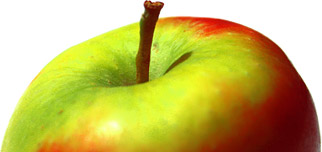Owner's comments
Lemon Pippin (Kirke's Lemon Pippin; Quince; Englischcr Winterquiitenapfel) (taken from: http://chestofbooks.com/gardening-horticulture/Robert-Hogg/The-Fruit-Manual-Great-Britain/Apples-Part-102.html)
Fruit, medium sized, three inches and a quarter long, by two and a half broad; oval, with a large fleshy elongation covering the stalk, which gives it the form of a lemon. Skin, pale yellow, tinged with green, changing to a lemon yellow as it attains maturity, strewed with russety freckles, and patches of thin delicate russet. Eye, small, and partially open, with short segments, and set in an irregular basin, which is frequently higher on one side than the other. Stamens, median; tube, funnel-shaped. Stalk, short, entirely covered with the fleshy elongation of the fruit. Flesh, firm, crisp, and briskly flavoured. Core, very small, and occupying very little space in the fruit. Cells, obovate; axile.
A very good apple, either for culinary or dessert use; it is in season from October to April, and is perhaps the most characteristic apple we have, being sometimes so much like a lemon as at first sight to be taken for that fruit. Forsyth says it is excellent for drying. The tree does not attain a large size, but is healthy, hardy, and a good bearer.
It is uncertain at what period the Lemon Pippin was first brought into notice. Rogers calls it the "Quince Apple," and, if it is what has always been known under that name, it must be of considerable antiquit), being mentioned by Rea, Worlidge, Ray, and almost all the early writers; but the first instance wherein we find it called Lemon Pippin is in Ellis's "Modern Husbandman," 1744, where he says it is "esteemed so good an apple for all uses, that many plant this tree preferable to all others."
